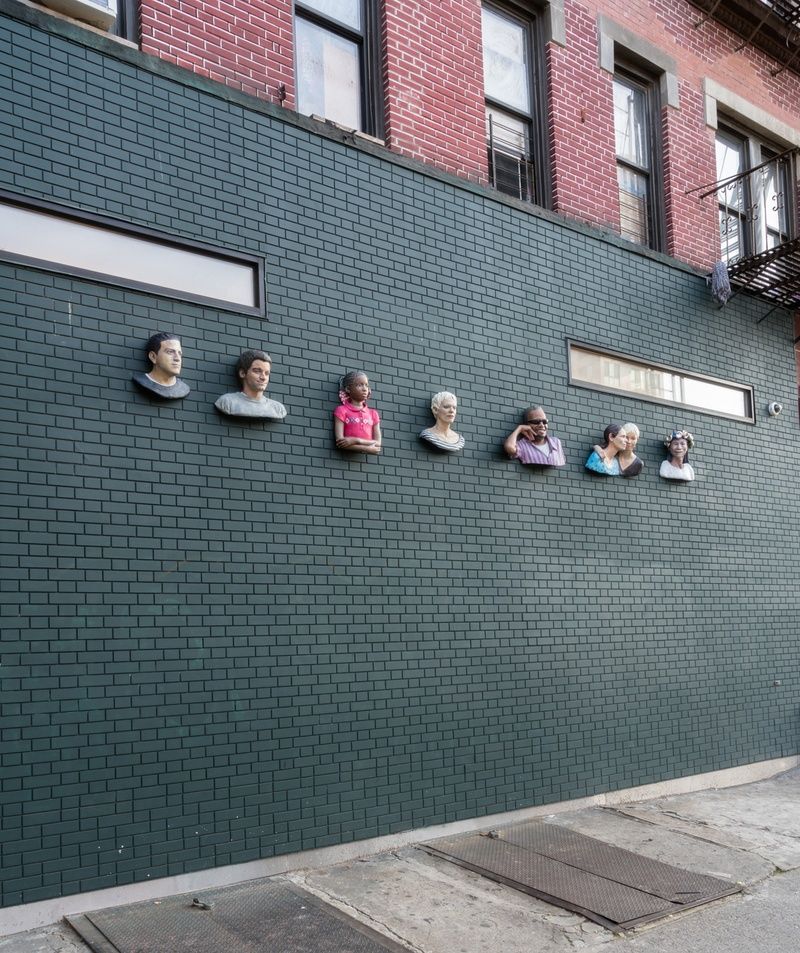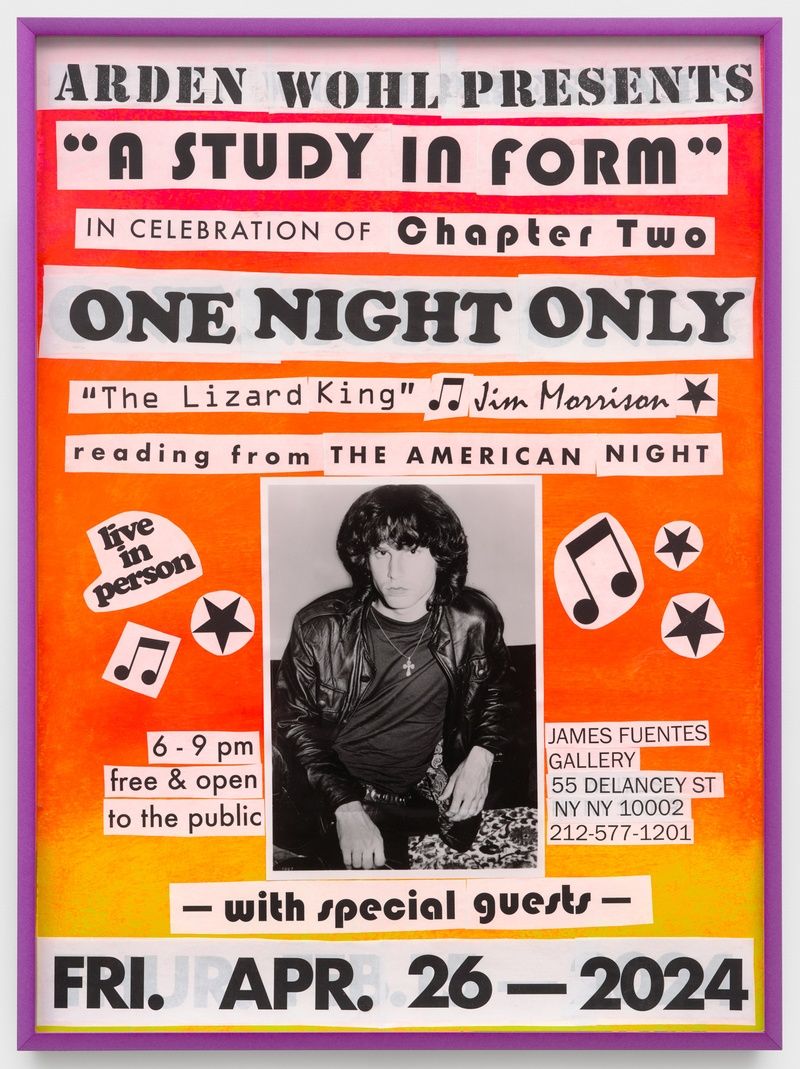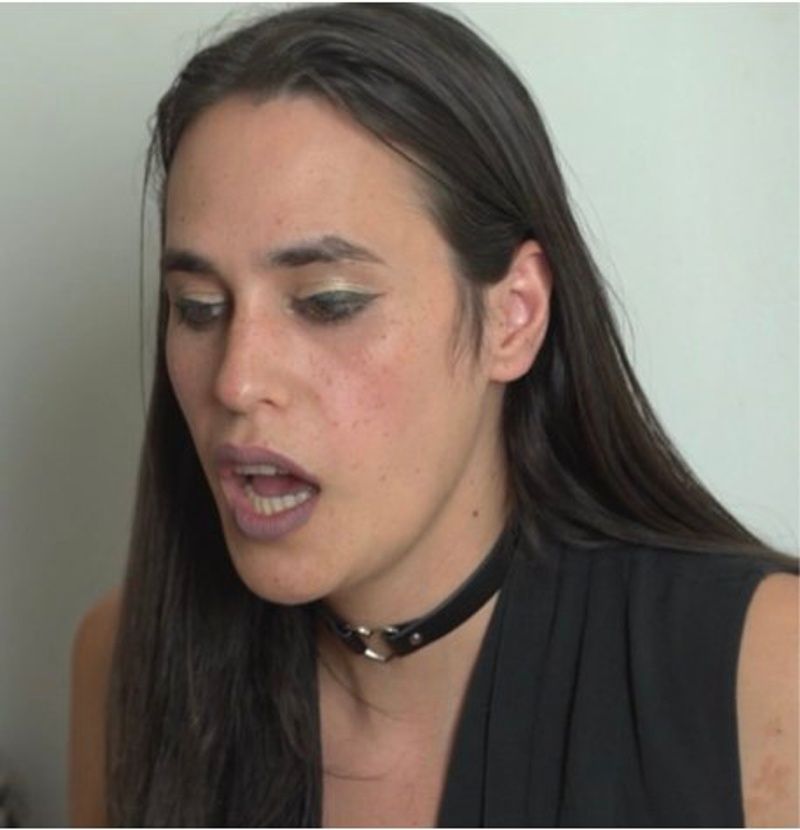James Fuentes Gallery
FINAL EXHIBITION AT 55 DELANCEY:
Opening reception: Friday, April 26, 6-8pm
A Study in Form (Chapter Two) marks the second half of a two-part exhibition project curated by Arden Wohl that touches upon various relationships, dialogues, intersections, and companionships between artists and poets; and their poetry and art. Here, a range of disciplines, generations, and perspectives come together to push beyond the boundary of the visual artifact as an end point of the artwork.
Presenting work from over 70 artists, Chapter Two will be the final exhibition at 55 Delancey Street, where James Fuentes has been located since 2010 (the gallery was first established in the same neighborhood in 2007). In community, this project honors the gallery’s legacy on the Lower East Side and at the same time celebrates the future. From June of 2024, the gallery's sole New York home will be at 52 White Street in Tribeca.
Chapter Two includes artworks by Alia Raza, Alice Attie, Alvaro Barrington, Amy Sillman, Ann Craven, Anton van Dalen, Bambou Gili, Becca Mann, Becky Howland, Ben Estes, Bennett Miller, Bryson Brodie, Charles Mayton, Charlie Ahearn, Cheyenne Julien, Cindy Sherman, Colleen Barry, Dana Schutz, Danny McDonald, Didier William, Dustin Yellin, Eleanor Friedberger, Eliza Douglas, Elsa Rensaa, Emily Sundblad, Gina Beavers, Greer Lankton, Hannah Black, Hannah Lee, Hans Accola, Helen Marden, Izzy Barber, Jane Dickson, Jenna Gribbon, Jennie C. Jones, Jennifer Herrema, Jessica Craig-Martin, Jessica Dickinson, Jim Jarmusch, Jo Messer, Joey Frank, John Ahearn, John McAllister, Jonah Freeman, Joshua Abelow, Julia Chiang, Justin Chance, Justin Lowe, Keegan Monaghan, Keith Riley, Kon Trubkovich, Leah Singer, Lee Dawson, Lee Quinones, Lee Ranaldo, Lily Ludlow, Lisa Robertson, Lizzi Bougatsos, Lua Beaulieu, Lukas Geronimas, Maggie Ellis, Marley Freeman, Matthew Barney, Matthew Higgs, Michael Berryhill, Michael Cline, Natalia Gaia, Nick Sandow, Oscar yi Hou, Pat Steir, Peter Halley, Peter McGough, Rachel Feinstein, Raúl de Nieves, Rebecca Watson Horn, Richard Heinrich, Ryan Johnson, Sadie Laska, Sahra Motalebi, Sam Messer, Sheree Hovsepian, Spencer Sweeney, Stefan Bondell, Stipan Tadić, Tauba Auerbach, Thom Zynwala, Troy Montes-Michie, Zoe McGuire, and poets hannah baer, Matvei Yankelevich, Anselm Berrigan, Anne Waldman, and Zêdan Xelef.
The ecosystem of the creative individual is a hard one to quantify or categorize. Sometimes groups emerge in well-defined movements with easily transmittable names—impressionists, minimalists, feminists—though most often, these descriptive nouns and adjectives only accrue long after the fact. (Alexandra Kollontai and Sheryl Sandberg both belong to the greater history of feminism, for example, but they might be perplexed to find themselves in the same boat.) Often, these names are not self-applied and function more as a marketing device than a useful and plausible heuristic for what is happening in any given historical moment. With any group, there is an individual effort to identify shared characteristics. What is that moment today, and is the situation of culture just as important as the solitary act of creation?
This is the realm of poetry and poet: the spirit that rejects explicit meanings and easily defined packages in favor of the lyrical and allusive. To disregard the pressure of commercial spectacle in favor of the quiet and personal is to defy the misconception that resisting market trends is useless. Poetic speech has its roots in humanity’s primordial creative endeavors. Were not the first written words images? I’d say that the preservation and propagation of poetic practice is just as fundamental as that of visual artwork.
The relationship between the visual arts and poetry is long and well established. “Ut pictura poesis”—pictures like poetry, the formula of the Roman poet Horace—is among the most influential directives to artistic expression since the Renaissance. Michelangelo wrote poems. But poetic and artistic influences often wend their ways along circuitous, unexpected, and perverse routes. Gertrude Stein was as famous for her gatherings that brought together artists and writers as she was for her writing. We know her for “Three Lives” and “The Making of Americans,” but Picasso’s looming, totemic portrait intrudes forcefully even for those who haven’t read her recondite prose and star-splattered verse.
Frank O’Hara was not only a poet but also an art critic and curator at the Museum of Modern Art. Marcel Broodthaers was a poet before he embarked on his mission to make “insincere” art objects. Now he’s accounted as the Arethusa of Institutional Critique: muse of the art world compulsively biting its own tail. Brice Marden’s “Cold Mountain” paintings took inspiration from the Tang Dynasty poet Hanshan—minimalism rerouted through a Floating World. While it would be impossible to make one reducible statement about the symbiosis of poets and artists, I would propose that the nurturing of creative community brings forward a collective energy that gives way to innovations in form and approach.
Though predominantly a collection of visual art, this exhibition beats with the heart of a poet. Its ambition is to position a group of artists and writers across generations and locations who are connected by a social and artistic foment. The scene, rather than something frivolous and fashionable, becomes a space where a group fosters collective boldness in stepping outside of accepted convention. This is not a show organized around simple aesthetic or demographic similarities. This show aims for a locus where the divergence of individual efforts finds communal reciprocity and fortification. In a moment when the social and cultural noise may feel deafening—and the artist’s work seems destined for the palette racks of eyeless dream brokers—this exhibition attempts to shift focus to the communal here and now.
—Arden Wohl
Works

Scent:
Alia Raza
A mad mother she took after, 2024
Synthesized molecules, plant extracts, isopropyl myristate

John Ahearn
Delancey Street, 2016-2024
Epoxy enamel on aqua resin
Dimensions variable

Eleanor Friedberger
One Night Only, 2024
Mixed media in artist frame
25 × 18 ½ inches

Hannah Black
Politics, 2022
Single-channel video, color, sound
12:21 minutes
Edition 1 of 5 + 2 AP